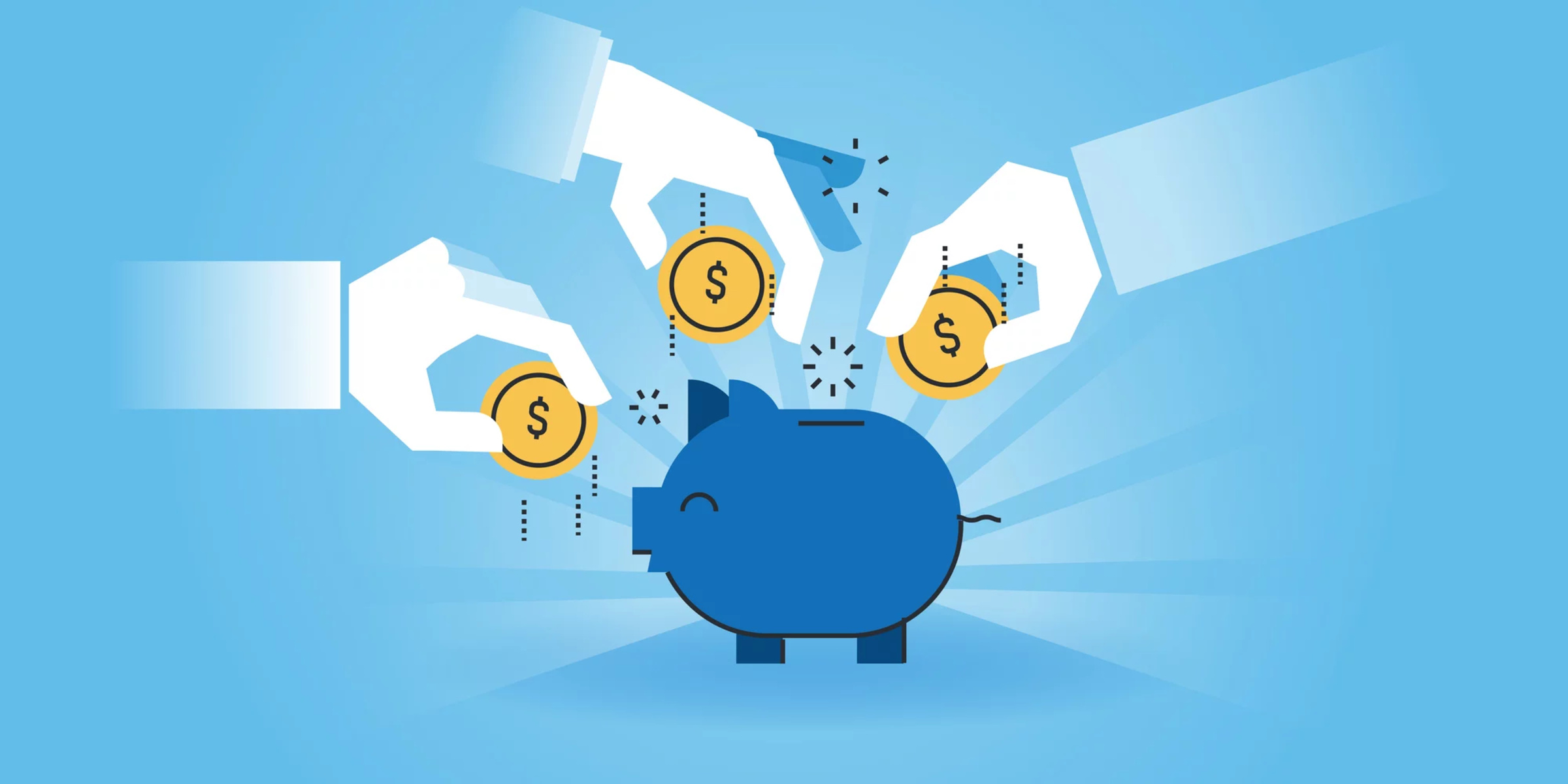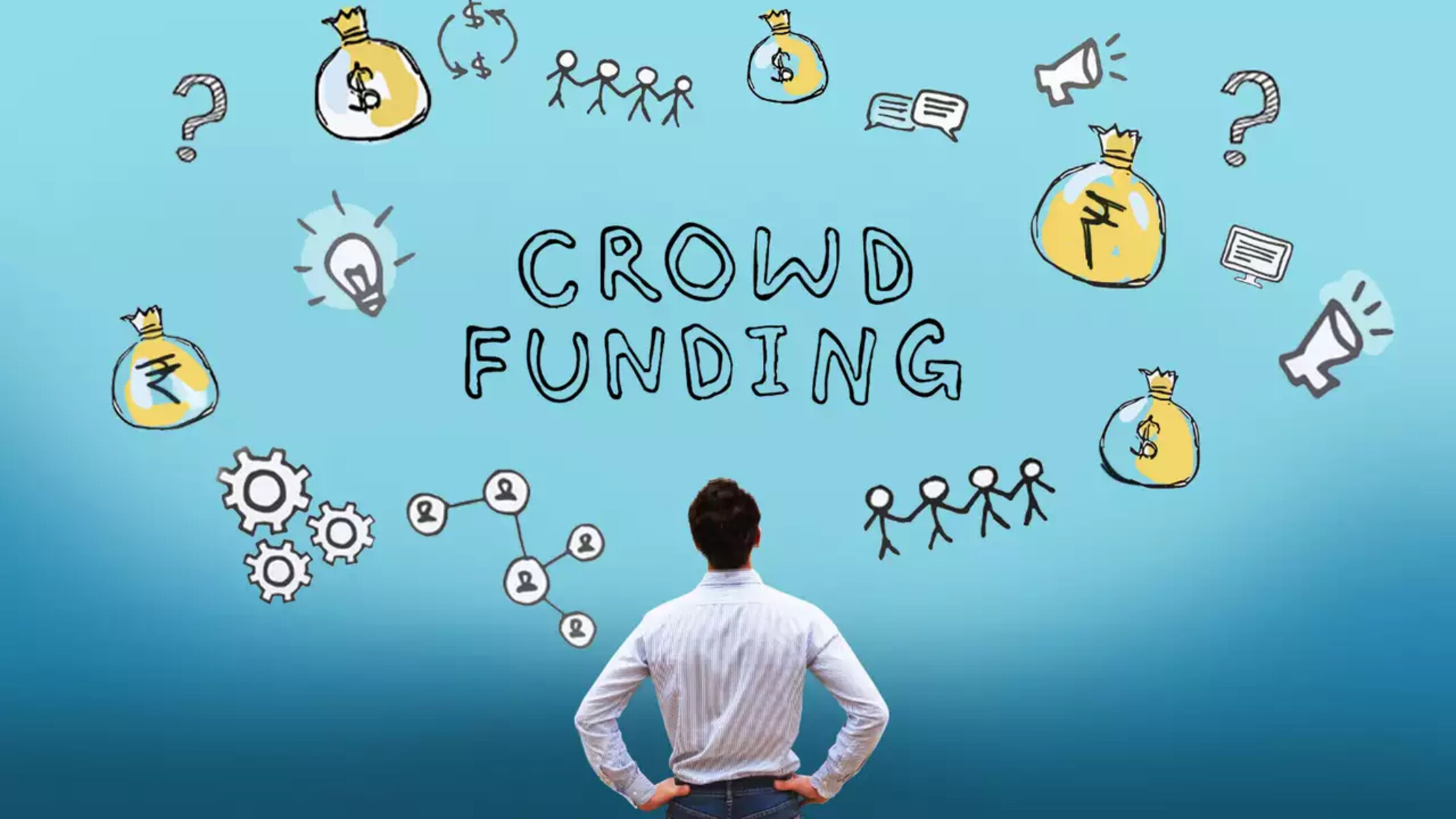Introduction
Welcome to the world of crowdfunding sites, where innovative ideas and creative projects find the financial support they need to become a reality. In this digital age, crowdfunding has emerged as a popular method for individuals, entrepreneurs, and organizations to raise funds from a large pool of potential backers. Whether you have a groundbreaking invention, a unique artistic endeavor, or a charitable cause that needs funding, crowdfunding sites offer a platform to connect with individuals who are passionate about supporting your vision.
At its core, crowdfunding is all about the power of the crowd. It harnesses the collective resources and enthusiasm of people who believe in a project and are willing to contribute funds to see it come to fruition. Traditional methods of financing, such as bank loans or venture capital, can be challenging to obtain, particularly for individuals without a proven track record. However, crowdfunding breaks down those barriers by allowing anyone with a compelling idea to pitch it directly to potential backers.
The internet has revolutionized the way we connect and communicate, and crowdfunding has taken full advantage of this digital landscape. Crowdfunding sites act as intermediaries, providing a platform where project creators can showcase their ideas and solicit financial support from individuals around the world. These sites bring together project creators, backers, and the general public in an accessible and transparent way. They provide a space for individuals to believe in the power of collective action and make a meaningful impact on projects that resonate with them.
While crowdfunding has gained popularity in recent years, the concept of collective funding has been around for centuries. History is dotted with examples of communities coming together to fund civic projects, charitable causes, and artistic endeavors. However, it was the advent of the internet that truly democratized the funding process and made crowdfunding accessible to a global audience. Today, crowdfunding sites have become a digital marketplace for ideas, connecting creators with supporters, and opening doors to endless possibilities.
In the following sections, we will delve deeper into the workings of crowdfunding, explore different types of crowdfunding sites, discuss the benefits and challenges associated with crowdfunding, and provide tips for running a successful crowdfunding campaign. So, if you’re ready to unlock the potential of crowdfunding and turn your dreams into reality, let’s dive in!
Definition of Crowdfunding
Crowdfunding can be best described as a method of raising funds through the collective efforts of a large group of people, typically facilitated via the internet. It is a form of crowdsourcing that allows project creators to bypass traditional funding avenues and directly appeal to individuals who are interested in supporting their ventures.
The concept of crowdfunding revolves around the idea of pooling small contributions from many individuals to achieve a larger financial goal. Instead of relying on a single source of funding, such as a bank or investor, project creators can tap into the power of the crowd to secure the necessary funds. In return for their contributions, backers often receive rewards, equity, or other forms of incentives based on the nature of the project and the platform being used.
Crowdfunding offers a unique opportunity for both project creators and backers. For creators, it provides a platform to validate their ideas, gain exposure, and secure financial backing without the need for extensive personal capital or connections within the industry. It allows them to showcase their projects to a worldwide audience, take advantage of social media trends, and leverage their personal networks to generate buzz and support.
On the other hand, crowdfunding presents backers with a chance to be part of the journey and contribute to projects they are passionate about. It allows individuals to support causes, innovations, and creative endeavors that align with their interests or values. Backers not only have the satisfaction of helping bring a project to life but may also receive exclusive rewards, early access, or a stake in the project’s success.
There are various forms of crowdfunding, including donation-based, rewards-based, equity-based, and debt-based crowdfunding. In donation-based crowdfunding, backers contribute funds without an expectation of receiving anything in return, often for charitable or philanthropic causes. Rewards-based crowdfunding involves providing backers with non-monetary rewards or incentives, such as early access to products, exclusive merchandise, or personalized experiences.
Equity-based crowdfunding, on the other hand, allows backers to invest in a project or business in exchange for shares or equity. This form of crowdfunding appeals to investors looking for potential financial returns on their investments. Lastly, debt-based crowdfunding, also known as peer-to-peer lending or crowdfunding loans, involves individuals lending money to others in need, who then repay the loan with interest over time.
Overall, crowdfunding has revolutionized the way projects are funded and has empowered individuals to turn their dreams into reality. It offers a democratic and inclusive approach to financing, allowing anyone with a compelling idea or project to pursue their goals and find support from a global community of like-minded individuals.
History of Crowdfunding
The concept of crowdfunding may seem like a recent phenomenon, but its roots can be traced back hundreds of years. The practice of collective funding has existed in various forms throughout history, driven by the desire of communities to support projects, businesses, and causes that they believed in.
One of the earliest examples of crowdfunding can be found in the 18th century when author Alexander Pope sought financial support from his readers to complete the translation of Homer’s works. Pope offered his supporters different levels of recognition, ranging from their names being included in the published work to receiving a special deluxe edition of the book.
In the United States, the concept of crowdfunding gained traction in the late 19th century when the iconic Statue of Liberty was financed by the contributions of thousands of individual donors. The pedestal for the statue, in particular, was funded through a public fundraising campaign led by newspaper publisher Joseph Pulitzer. This campaign not only helped raise the necessary funds but also served as a means to engage and unite individuals around a shared national symbol.
Fast forward to the early 2000s, and the advent of the internet revolutionized the crowdfunding landscape. Platforms such as ArtistShare, launched in 2003, paved the way for the modern crowdfunding movement. ArtistShare enabled musicians to fund their projects through direct contributions from fans, marking the beginning of a new era where creative endeavors could be financed by the very people who appreciated and supported them.
However, it was the emergence of Kickstarter in 2009 that truly popularized crowdfunding and brought it into the mainstream consciousness. Kickstarter provided a platform for creative individuals to showcase their projects and attract financial backing from a global audience. The platform’s success stories, including the funding of independent films, video games, and technological innovations, demonstrated the vast potential of crowdfunding as a viable funding option for a wide range of endeavors.
Since then, crowdfunding has continued to gain momentum, with numerous platforms catering to specific niches and industries. Indiegogo, launched in 2008, expanded the reach of crowdfunding by offering a more flexible funding model, allowing project creators to receive funds regardless of whether they reached their stated goal. This “all-or-nothing” and “flexible funding” model has since become a defining aspect of crowdfunding platforms.
Equity-based crowdfunding, a variation that allows backers to receive shares or equity in a company, gained prominence with the passage of the Jumpstart Our Business Startups (JOBS) Act in the United States in 2012. This legislation eased regulatory restrictions on equity crowdfunding, opening the doors for entrepreneurs to raise capital by offering ownership stakes in their ventures to the general public.
With the constant evolution of technology and the growing popularity of social media, crowdfunding has become more accessible than ever before. It has empowered individuals and organizations from all walks of life to fund projects, bring innovative ideas to life, and make a positive impact on their communities.
Today, crowdfunding has become firmly ingrained in our modern society, providing a means for creators, innovators, and philanthropists to connect with a global audience and turn their dreams into reality.
How Crowdfunding Works
Crowdfunding operates on a simple yet powerful principle: connecting project creators with individuals who are willing to financially support their ventures. The process typically involves three main actors: the project creator, the backers, and the crowdfunding platform that facilitates the transaction.
1. Project Creator: The project creator is an individual or group seeking funds to bring their idea, invention, or project to life. They define the goals, timeline, and funding target for their project, and create a compelling campaign to showcase their vision. The project creator is responsible for promoting their campaign, engaging with potential backers, and delivering on their promises once the funding is secured.
2. Backers: Backers are individuals who contribute funds to support a project on a crowdfunding platform. They are motivated by a personal interest in the project or a desire to be part of something innovative or impactful. Backers can contribute any amount, depending on their financial capacity and level of enthusiasm for the project. In return for their support, backers may receive various incentives or rewards based on the nature of the project and the campaign’s stated rewards. These rewards can range from early access to products, exclusive merchandise, or personalized experiences.
3. Crowdfunding Platform: Crowdfunding platforms act as intermediaries, providing an online space where project creators can showcase their campaigns and connect with potential backers. Platforms like Kickstarter, Indiegogo, and GoFundMe provide the infrastructure and tools necessary for creators to launch their campaigns, accept financial contributions, and engage with their backers. These platforms often have established communities, user-friendly interfaces, and built-in payment systems to streamline the crowdfunding process.
The crowdfunding process usually follows the following steps:
- Project Planning and Campaign Creation: The project creator prepares the campaign by defining the project’s goals, creating a compelling narrative, and determining the funding target. They set a campaign duration and decide on the types of rewards or incentives they will offer to backers.
- Campaign Launch: Once the campaign is ready, it is launched on the chosen crowdfunding platform. The project creator promotes the campaign through various channels, including social media, email marketing, and personal networks, to generate visibility and awareness.
- Backer Contributions: Potential backers visit the campaign page, learn about the project, and decide whether to contribute financially. Backers can contribute any amount they choose, with some platforms offering a minimum or maximum limit per contribution. Backers can also share the campaign with others, helping to expand the project’s reach and attract more supporters.
- Campaign Updates and Engagement: Throughout the campaign duration, the project creator provides regular updates to backers, sharing progress, milestones, and any new developments. They engage with backers through comments, messages, and other forms of communication, fostering a sense of community and involvement.
- Reaching the Funding Goal and Beyond: If the campaign reaches its funding target within the designated timeframe, the project creator can access the funds. They then begin the process of delivering on their promises, whether it involves manufacturing products, completing a creative work, or fulfilling any other commitments made during the campaign. If the funding goal is not reached, some platforms refund the backers’ contributions, while others allow the project creator to keep the funds and proceed with their project on a smaller scale.
It’s important to note that crowdfunding is not without its challenges. Project creators must put in considerable effort to market their campaigns, engage with backers, and deliver on their promises. Backers should carefully evaluate campaigns before contributing, considering factors such as the creator’s track record, project feasibility, and risks involved.
Nevertheless, crowdfunding offers an exciting opportunity for project creators to access funding and connect with an enthusiastic audience. It has transformed the way projects are funded and has empowered individuals to turn their ideas into reality with the support of the crowd.
Types of Crowdfunding Sites
Crowdfunding sites come in various forms, catering to different types of projects, industries, and funding models. Understanding the different types of crowdfunding platforms can help project creators choose the most suitable platform for their specific needs. Here are some common types of crowdfunding sites:
- Rewards-based Crowdfunding: This is the most popular and widely recognized form of crowdfunding. Platforms such as Kickstarter and Indiegogo operate on a rewards-based model, where project creators offer various levels of rewards or incentives to backers based on their contribution amount. These rewards can range from early access to products, exclusive merchandise, personalized experiences, or acknowledgments in the project’s credits. Rewards-based crowdfunding is suitable for creative projects, innovative ideas, and consumer products.
- Equity-based Crowdfunding: In equity-based crowdfunding, backers receive shares or equity in a company or project in exchange for their financial contributions. This type of crowdfunding is typically used by startups and businesses seeking capital investment. Platforms like SeedInvest and Crowdcube specialize in equity-based crowdfunding and provide an opportunity for investors to become part-owners of promising ventures.
- Donation-based Crowdfunding: Donation-based crowdfunding is driven by philanthropic or charitable causes. Platforms such as GoFundMe and Crowdrise cater to individuals, nonprofits, and community organizations seeking financial support for medical expenses, disaster relief, educational initiatives, and other charitable endeavors. In donation-based crowdfunding, backers contribute funds without expecting any financial returns or rewards.
- Debt-based Crowdfunding: Debt-based crowdfunding, also known as peer-to-peer lending or crowdfunding loans, involves individuals lending money to others in need, who then repay the loan with interest over time. Platforms like LendingClub and Prosper facilitate this type of crowdfunding, where individuals can invest in loans and earn potential returns on their investment through the interest payments.
- Creative and Artistic Crowdfunding: Some crowdfunding sites focus specifically on supporting creative and artistic projects. These platforms, such as Patreon and Drip, enable creators in fields such as music, visual arts, writing, and video production to receive ongoing support from fans and patrons. Creators offer exclusive content, behind-the-scenes access, and other perks to their patrons in return for their regular contributions.
- Social Impact Crowdfunding: Social impact crowdfunding platforms, like Kiva and StartSomeGood, are dedicated to financing projects that aim to make a positive impact on society and the environment. Individuals, organizations, and social enterprises can raise funds for initiatives such as sustainable development, education, healthcare, and community empowerment.
It’s important for project creators to analyze the features, community engagement, and success rates of different crowdfunding platforms before selecting one that aligns with their project’s objectives and target audience. Additionally, project creators should consider the fees and terms associated with each platform, as well as the platform’s reputation and track record in their industry or niche.
By understanding the different types of crowdfunding sites available, project creators can make informed decisions and choose the platform that best fits their project’s funding model, industry, and goals.
Benefits of Using a Crowdfunding Site
Crowdfunding sites offer a range of benefits for project creators, providing them with a unique platform to raise funds and bring their ideas to life. Here are some of the key benefits of using a crowdfunding site:
- Access to a Global Audience: Crowdfunding platforms have a vast and diverse user base, allowing project creators to showcase their campaigns to a worldwide audience. This global reach increases the chances of connecting with individuals who are passionate about the project and willing to contribute financially. It provides an opportunity to tap into different markets and demographics that might otherwise be inaccessible.
- Validation of Ideas: Launching a crowdfunding campaign provides project creators with an excellent opportunity to test the viability and market demand for their ideas. By presenting their projects to the public and attracting backers, creators receive real-time feedback and validation from potential customers or supporters. The interest and financial contributions received during the campaign can serve as a vote of confidence, reassuring creators that their ideas resonate with the target audience.
- Alternative Funding Option: Crowdfunding offers an alternative method of financing for projects that may struggle to secure traditional funding from banks or investors. It allows individuals who may not have extensive personal capital or connections within the industry to access funding and turn their ideas into reality. Crowdfunding democratizes the funding process, providing equal opportunities for creators from diverse backgrounds and with varying levels of financial resources.
- Marketing and Exposure: Launching a crowdfunding campaign can act as a marketing catalyst for a project. It provides an opportunity for project creators to create buzz, generate public interest, and gain media coverage. Crowdfunding campaigns often have built-in social sharing tools, enabling backers to spread the word about a project organically. The campaign acts as a promotional platform, allowing creators to showcase their projects, gather contact information from interested individuals, and build a community of supporters that can continue to engage with the project beyond its funding stage.
- Potential for Pre-Selling and Market Testing: Rewards-based crowdfunding allows project creators to pre-sell their products or services to backers. By offering exclusive incentives or early access to products, creators can generate pre-orders and gather valuable market insights before officially launching. This market testing aspect helps creators refine their offerings, adjust pricing, and understand customer preferences, ultimately leading to a more successful product launch in the future.
- Community Engagement and Support: Crowdfunding is not just about financial contributions; it also nurtures a sense of community and engagement around the project. Backers who believe in the project and contribute financially often become advocates, spreading the word about the project and providing ongoing support. The interaction and feedback from backers can be invaluable for project creators, helping them improve the project, gather ideas, and build lasting relationships with their audience throughout the campaign and beyond.
These benefits make crowdfunding sites an attractive option for project creators, enabling them to tap into a global audience, validate their ideas, secure funding, and build a strong community of supporters. It’s important, however, for creators to develop a well-thought-out campaign, engage actively with backers, and deliver on their promises to ensure a successful crowdfunding experience.
Risks and Challenges of Crowdfunding
While crowdfunding offers numerous benefits, it is not without its risks and challenges. Project creators should be aware of these potential pitfalls to navigate the crowdfunding landscape effectively. Here are some of the key risks and challenges associated with crowdfunding:
- Failure to Reach Funding Goal: One of the primary risks of crowdfunding is the possibility of not reaching the funding target set for the project. Most crowdfunding platforms operate on an “all-or-nothing” model, where creators must reach their goal within a specified timeframe to receive the funds. If the campaign falls short of the target, backers may receive refunds, and the project creator will need to explore alternative funding options.
- Highly Competitive Environment: Crowdfunding platforms have become increasingly competitive, with thousands of campaigns vying for attention and financial support. Cutting through the noise and standing out among the sea of projects can be a significant challenge. Project creators need to invest in effective marketing strategies, compelling storytelling, and engaging visuals to capture the interest of potential backers.
- Delivery and Fulfillment: Successfully completing a crowdfunding campaign is just the beginning. Project creators must fulfill their promises by delivering the rewards or incentives to backers in a timely manner. Manufacturing, shipping logistics, and quality control can pose challenges and delays. Failure to deliver on time or meet backers’ expectations can damage the project’s reputation and relationships with backers.
- Legal and Regulatory Compliance: Crowdfunding is subject to various legal and regulatory requirements, depending on the jurisdiction and the nature of the project. Project creators must ensure compliance with laws related to securities, intellectual property, consumer protection, and taxation. Non-compliance can result in legal disputes, financial penalties, and damage to the project’s reputation.
- Managing Expectations: Crowdfunding can create high expectations among backers, especially if creators make ambitious promises or overestimate the project’s capabilities. Project creators must manage these expectations effectively by providing realistic timelines, transparent communication, and regular updates. Keeping backers informed and involved throughout the project’s development is crucial to maintaining trust and support.
- Intellectual Property Risks: Sharing the details of a project on a crowdfunding platform exposes it to potential copycats and intellectual property infringement. Project creators should take steps to protect their intellectual property before launching a campaign, which may involve securing patents, trademarks, or copyrights, and exercising caution in revealing sensitive information.
- Reputation Management: Crowdfunding campaigns are highly visible and subject to public scrutiny. Negative feedback, criticism, or controversies can quickly spread and impact the project’s reputation. Project creators need to be prepared to respond to feedback, address concerns, and manage their online presence proactively to protect their reputation and maintain a positive image.
Overcoming these risks and challenges requires careful planning, effective project management, and open communication with backers. Project creators should thoroughly research and understand the crowdfunding platform’s terms, develop a realistic budget, set achievable goals, and maintain transparency throughout the entire process.
By being aware of the risks and challenges, project creators can mitigate potential issues and increase the chances of running a successful and fulfilling crowdfunding campaign.
Examples of Successful Crowdfunding Projects
Crowdfunding has paved the way for numerous groundbreaking and impactful projects to come to fruition. Many creative ideas, innovative products, and charitable ventures have found success through the support of crowdfunding platforms. Here are a few notable examples of successful crowdfunding projects:
- Pebble Time: The Pebble smartwatch made headlines in 2012 when it launched its first Kickstarter campaign. Seeking funding to bring their innovative wearable technology to the market, Pebble exceeded their initial goal of $100,000 within hours and went on to raise over $10 million by the end of the campaign. The successful crowdfunding campaign allowed Pebble to launch one of the first mainstream smartwatches, kickstarting the wearables industry.
- Exploding Kittens: Exploding Kittens, a card game created by the team behind the popular webcomic “The Oatmeal,” broke crowdfunding records on Kickstarter in 2015. The campaign raised over $8 million in just 30 days, becoming the most backed project in Kickstarter history at that time. The humor and quirky illustrations combined with the unique gameplay concept captured the attention and support of thousands of backers.
- Coolest Cooler: The Coolest Cooler set a new record for crowdfunding on Kickstarter in 2014, raising over $13 million. The multifunctional cooler featured innovative features such as a built-in blender, Bluetooth speakers, and USB charger. Despite facing manufacturing and production challenges, the Coolest Cooler campaign demonstrated the immense potential of crowdfunding for consumer products.
- Oculus Rift: The virtual reality headset, Oculus Rift, was successfully crowdfunded on Kickstarter in 2012. The campaign captured the imagination of thousands of backers, raising over $2 million and attracting the attention of industry giants. Eventually, Oculus Rift was acquired by Facebook for $2 billion, solidifying its position as a leader in the virtual reality space.
- Reading Rainbow: The beloved children’s educational program, Reading Rainbow, launched a Kickstarter campaign in 2014 to bring a digital version of the show to classrooms nationwide. The campaign surpassed its $1 million goal within hours and ended with over $5 million in funding. The success of the campaign allowed Reading Rainbow to develop an interactive online library, providing educational resources and fostering a love of reading among children.
- OUYA: The OUYA gaming console raised more than $8 million on Kickstarter in 2012, promising a new approach to gaming by offering an open-source, Android-based console. The campaign attracted thousands of backers who were excited about the prospect of an affordable and hackable gaming system. While the console ultimately faced challenges and was eventually discontinued, the OUYA campaign showcased the potential of crowdfunding for hardware projects.
These success stories highlight the transformative power of crowdfunding, where innovative ideas can capture the imagination of a global audience and secure the financial support necessary to turn dreams into reality. They demonstrate the ability of crowdfunding platforms to connect project creators directly with passionate backers, creating a symbiotic relationship that benefits both parties.
However, it’s essential to recognize that not all crowdfunding campaigns reach such extraordinary levels of success. The examples provided serve to inspire and showcase the potential that can be unlocked through a well-executed crowdfunding campaign.
Tips for Running a Successful Crowdfunding Campaign
Running a successful crowdfunding campaign requires careful planning, effective execution, and continuous engagement with potential backers. Here are some essential tips to maximize your chances of success:
- Set Clear and Achievable Goals: Clearly define the goals of your project and set a realistic funding target. Break down the budget to show how the funds will be utilized, providing transparency to potential backers.
- Tell a Compelling Story: Craft a captivating campaign narrative that resonates with your target audience. Clearly communicate the problem your project solves or the unique value it offers. Use visuals, videos, and testimonials to bring your story to life.
- Offer Attractive Rewards: Create a range of rewards that are enticing to potential backers. Think about unique, exclusive, and personalized incentives that align with your project. Make sure the rewards are feasible to deliver within the stated timeline.
- Market and Promote Your Campaign: Build anticipation and create awareness for your campaign before it launches. Utilize social media, email marketing, and your personal network to generate buzz. Engage with influencers or relevant communities to extend your campaign’s reach.
- Provide Regular Updates: Keep your backers informed and engaged throughout the campaign. Regularly share updates on progress, milestones, and any challenges you may encounter. Be transparent about the project’s development and address any concerns or questions from your backers promptly.
- Cultivate a Community: Foster a sense of community around your project. Interact with backers through comments, messages, and social media. Encourage them to share your campaign and actively involve them in the project’s development. Show appreciation for their support and keep them involved beyond the funding stage.
- Utilize Visuals and Videos: Visual content is essential in capturing attention and conveying your project’s value. Invest in high-quality images, videos, and infographics that effectively showcase your idea, product, or progress. Use storytelling techniques to emotionally connect with your audience.
- Build Trust and Credibility: Establish trust by being transparent, providing regular updates, and responding promptly to inquiries. Showcase your expertise, credentials, or previous work to instill confidence in potential backers. Use testimonials or endorsements from satisfied customers or industry experts.
- Research and Learn from Successful Campaigns: Study successful crowdfunding campaigns in your niche or industry. Analyze their strategies, campaign structure, and engagement tactics. Learn from their successes and challenges to improve your own campaign.
- Plan for Risks and Contingencies: Identify potential risks or challenges that may arise during your campaign and develop contingency plans. Anticipate possible issues such as production delays, shipping challenges, or regulatory hurdles. Communicate your risk management strategy in your campaign updates to reassure backers.
Remember that running a successful crowdfunding campaign requires dedication, effort, and adaptation. Continuously monitor your campaign’s performance, make adjustments as necessary, and actively engage with your backers. By following these tips and leveraging the power of crowdfunding platforms, you can increase your chances of achieving your funding goals and bringing your ideas to life.
Conclusion
Crowdfunding has revolutionized the way individuals, entrepreneurs, and organizations raise funds for their projects, ideas, and causes. It has become a powerful tool for connecting project creators with a global audience of potential backers, providing a platform for innovation, creativity, and social impact. Through crowdfunding, individuals with compelling visions can access capital, validate their ideas, and build a community of supporters who believe in their cause.
Throughout this article, we have explored the various aspects of crowdfunding, including its definition, history, how it works, and the different types of crowdfunding sites available. We have also examined the benefits of using a crowdfunding site, along with the risks and challenges that project creators may encounter during their campaigns. In addition, we provided tips and insights on running a successful crowdfunding campaign.
Crowdfunding has enabled remarkable success stories, with projects like Pebble Time, Exploding Kittens, and Reading Rainbow captivating the hearts and wallets of backers around the world. These examples demonstrate the tremendous potential of crowdfunding to fuel innovation, bring creative ideas to life, and make a positive impact on communities.
However, it is important to approach crowdfunding with careful planning, realistic expectations, and a commitment to delivering on promises. Project creators must engage actively with their backers, provide regular updates, and manage their campaigns with transparency and professionalism. Building a strong and supportive community around your project is key to long-term success.
In conclusion, crowdfunding continues to reshape the funding landscape, empowering individuals and organizations to pursue their passions, turn dreams into reality, and connect with a global community of supporters. By understanding the nuances of crowdfunding and implementing effective strategies, project creators can unlock the potential of crowdfunding platforms and propel their ideas forward in an increasingly digital and interconnected world.

























